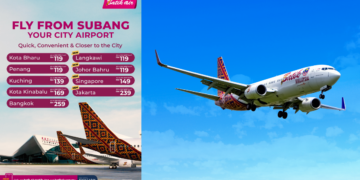In 2023, Shanghai’s Agibot made headlines by introducing its first-generation humanoid robot, capable of walking at 7 km/h. I can barely keep up with that pace… hahaha! This bold launch marks a serious challenge to Tesla’s Optimus, first unveiled in 2021, which aims to automate mundane and dangerous tasks. As Tesla and Agibot go head-to-head in the robotics space, their competition underscores contrasting approaches to the future of humanoid robots.
Tesla’s Optimus: A Bold Vision
Tesla introduced Optimus as a groundbreaking humanoid robot designed to automate a wide range of tasks, from warehouse work to domestic chores. Powered by Tesla’s advanced AI, Optimus is built to handle heavy lifting, repetitive labor, and potentially hazardous jobs. Elon Musk envisions a future where Optimus robots are as common as smartphones, helping humans by tackling the most physically taxing roles.
Tesla recently ramped up its hiring efforts to accelerate the development of Optimus. According to Tesla’s career site, they are offering up to $48 USD per hour for roles that involve walking for over seven hours a day while carrying up to 30 pounds, all while wearing a VR headset for extended periods of time. The job also has specific height requirements, between 5’7’’ and 5’11’’, likely to align with Optimus’ projected height. These hires are part of Tesla’s efforts to perfect the motion-capture training that will improve Optimus’s mobility and efficiency.
Agibot’s Yuanzheng A2: The New Challenger
Shanghai’s Agibot is fast becoming a strong contender in the humanoid robot market. Agibot’s humanoid robots are pushing boundaries by continuously evolving to meet the demands of dynamic environments. Agibot’s strength lies in its robots’ ability to learn on the job. Agibot’s robots evolve with each new experience, making them more versatile and responsive in complex situations. This real-time adaptability gives them an edge in industries that require high levels of precision and safety.
Agibot’s star humanoid robot, the Yuanzheng A2, is nothing short of impressive. Standing tall at 5’9″ (175 cm) and weighing in at 121 lbs. (55 kg), this robot is packed with advanced sensors and cutting-edge AI. Its artificial intelligence allows it to process and respond to a range of inputs such as visual, auditory, textual, and effectively mimicking human senses. The A2’s precision is next level, capable of pulling off delicate tasks like threading a needle with finesse. With its perfect blend of size, sensory smarts, and sharp skills, the Yuanzheng A2 is definitely one to watch in the fast-moving world of humanoid robotics.
As development progresses rapidly, the deployment of these robots is just around the corner.
The Rivalry: Tesla and Agibot have engaged in a fierce rivalry
The rivalry between Tesla and Agibot in the humanoid robotics arena has quickly become a driving force behind cutting-edge innovation. Tesla, under Elon Musk’s leadership, is advancing its Optimus robot by building on its established success in electric vehicles and artificial intelligence. On the other side, Agibot, led by former Huawei “Genius Youth” Peng Zhihui, is making waves with its Yuanzheng A2, positioning itself as a serious competitor. While Tesla prioritizes versatility and wide-ranging applications, Agibot focuses on rapid development and commercialization. Tesla benefits from its global brand recognition, whereas Agibot leverages its proximity to China’s manufacturing ecosystem to gain a competitive edge. This head-to-head battle is accelerating advancements in AI, sensors, and mechanical design, with potential applications extending from industry to household tasks. The stakes are immense, with the potential to shape industry standards and transform various sectors of the global economy. This competition not only fuels innovation but also highlights the broader technological race in humanoid robotics between the United States and China. This ongoing competition has accelerated innovation, leaving the world to watch who will take the lead in reshaping the future of robotics.
The Path Forward for Humanoid Robotics
As the rivalry between Tesla and Agibot unfolds, many other contenders have also emerged in the market. The future of humanoid robots is poised to revolutionize various aspects of our daily lives and industries. As artificial intelligence and robotics technologies continue to advance at an unprecedented pace, we can expect to see humanoid robots becoming increasingly sophisticated, versatile, and integrated into society. These robots are likely to play significant roles in healthcare, assisting with patient care, rehabilitation, and even performing complex surgical procedures. In manufacturing and logistics, humanoid robots could enhance productivity and safety by taking on physically demanding or hazardous tasks. The service industry may see humanoid robots working alongside humans in customer-facing roles, providing personalized assistance in retail, hospitality, and entertainment sectors.
With advancements in natural language processing and emotional intelligence, these robots could potentially become companions for the elderly and individuals with special needs. However, the widespread adoption of humanoid robots will also bring forth important ethical, social, and economic considerations, including job displacement, privacy concerns, and the need for new regulatory frameworks. Despite these challenges, the potential benefits of humanoid robots in augmenting human capabilities and improving quality of life make their continued development and integration an exciting prospect for the future.
See below for Videos:
@principle888 Tesla robot Optimus Prime II#science #tesla #musk #optimus #knowledge #fyp #tiktok
@rowancheung AGIBOT, a China-based robotics startup, just unveiled a family of five advanced humanoid robots, directly challenging Elon Musk and Tesla’s upcoming Optimus bot. AGIBOT’s five new models are both wheeled and biped humanoid robots specifically designed for diverse tasks — from household chores to industrial operations. The flagship model, Yuanzheng A2, stands 5’9″ (175cm), weighs 121 lbs (55kg), and can perform delicate tasks like needle threading. The company aims to start shipping 300 units by the end of 2024, claiming better commercialization and cost-control abilities than Tesla. Unitree, another high-performance robot manufacturer from China, also showcased its new G1 mass production-ready robot with better functionality and appearance. The humanoid robotics and AI race between the US and China is intensifying. While it’s been months since Tesla unveiled its Optimus 2 prototype, four Chinese startups, including AGIBOT revealing five new humanoid robots, have showcased major technical progress in just a few days. P.S. Yes, this video uses an AI-generated avatar of me, DM me ‘Avatar’ if you want to know how I did it! #rowanai #aiavatar
More form Wakeup Singapore:
Joie Tan Encourages Fans to Support Local Stationery Shop Before Closure
Is the Next Robot Table Tennis Olympic Champion in the Making?
Support Us:
If you have a story or a tip-off, email admin@wakeup.sg or get in touch via Whatsapp at 8882 5913.
Since you have made it to the end of the article, follow Wake Up Singapore on Telegram!
Wake Up Singapore is a volunteer-run site that covers alternative views in Singapore. If you want to volunteer with us, sign up here!
If you can, please do consider buying a mug or two to support Wake Up Singapore’s work!







